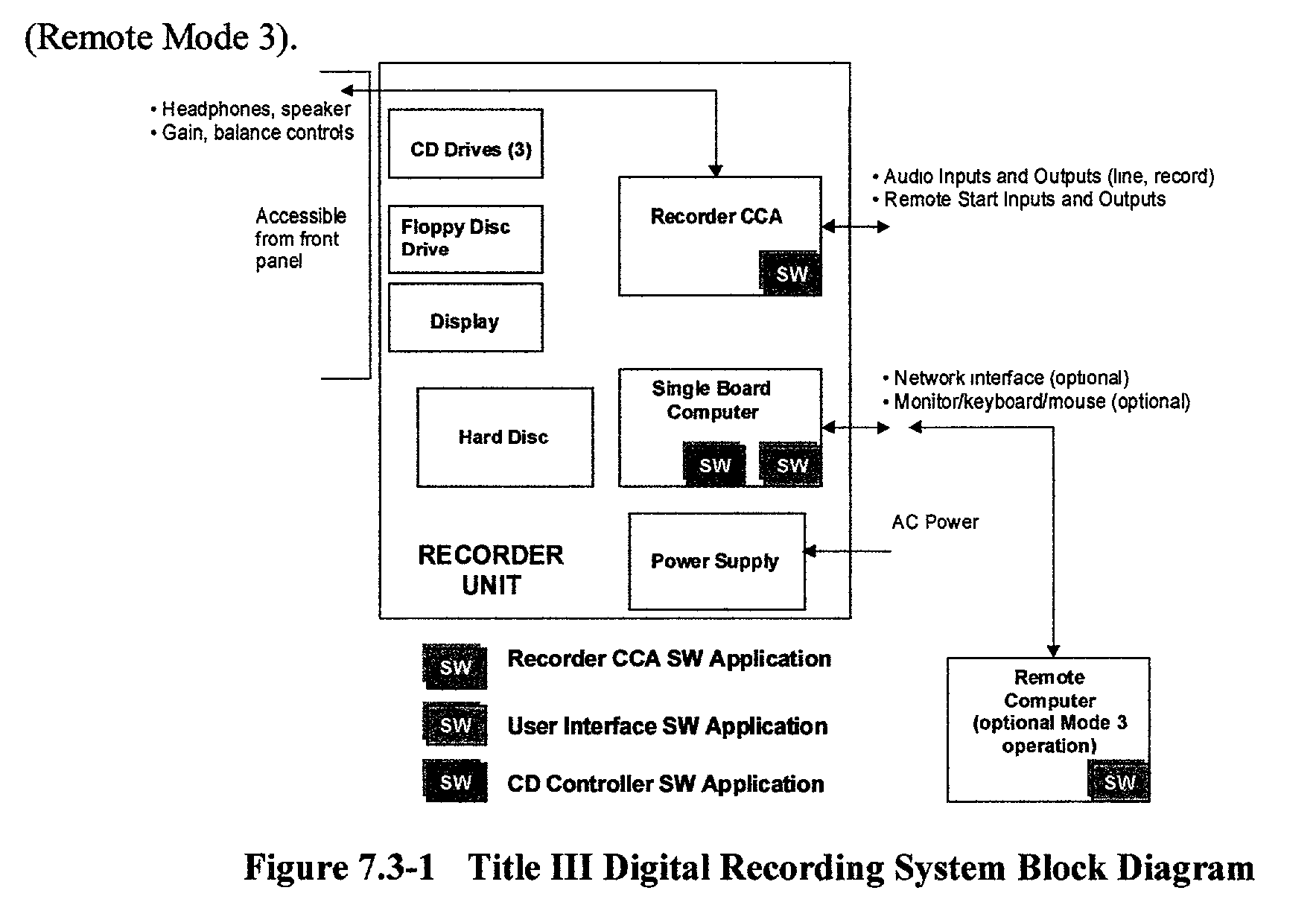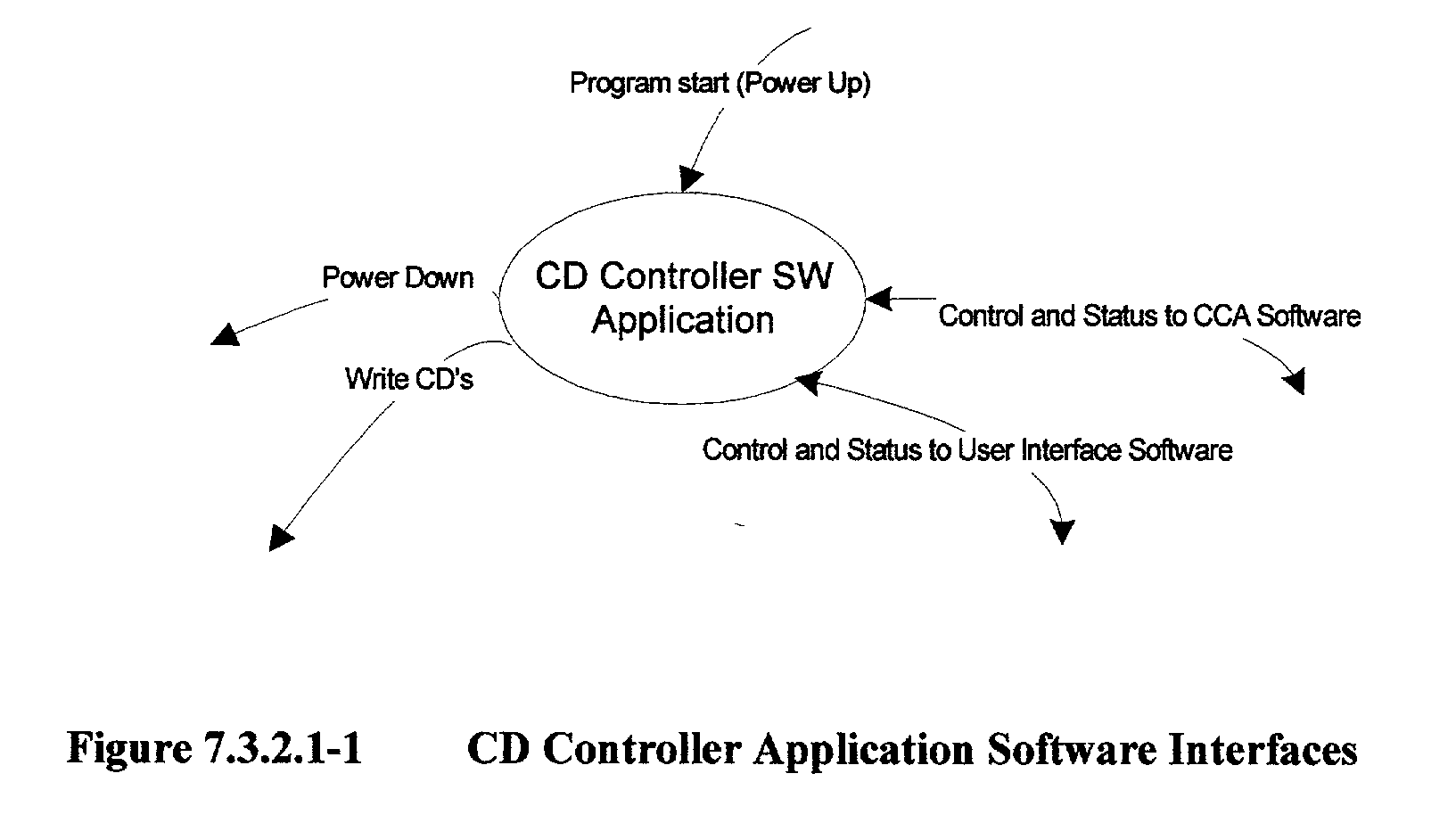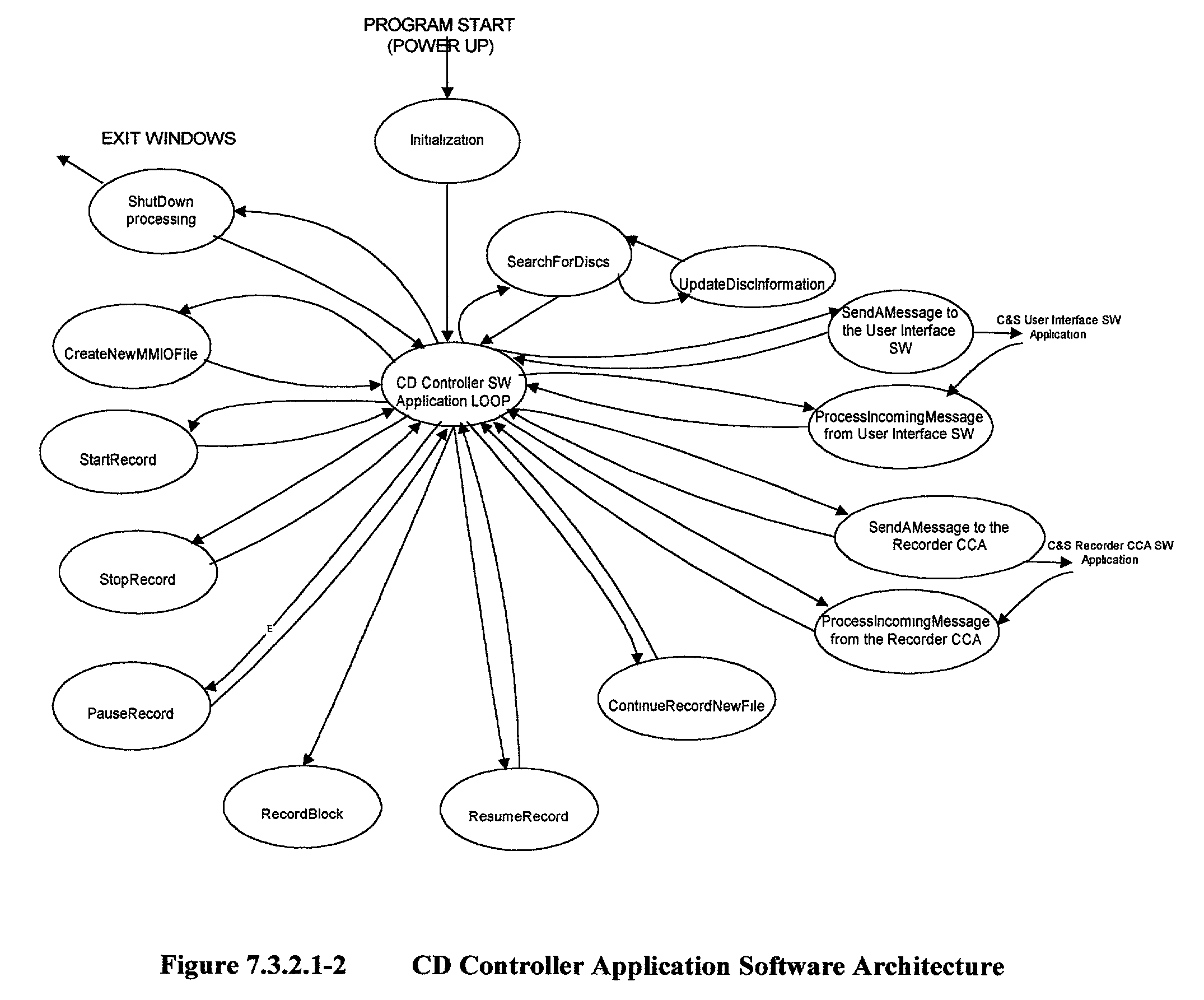Title III digital recording system
a digital recording and digital technology, applied in the field of electronic surveillance instruments, can solve the problems of legal intercept of telephony, the nature of access preclude the use of conventional and current telephony equipment, etc., to achieve the fidelity required for post-processing and generation of intercepted facsimiles
- Summary
- Abstract
- Description
- Claims
- Application Information
AI Technical Summary
Benefits of technology
Problems solved by technology
Method used
Image
Examples
Embodiment Construction
[0046] The Title III Recorder is capable of operating in the following modes of operation.
[0047] 1. MODE 1. Standalone Mode, no monitor or keyboard
[0048] In this mode, the Title III Recorder accepts remote start inputs from an external DNR or other source. The recorder front panel (Touch Screen) minimization control is used for minimization control. All target intercept data outputs (call initiation, start / stop time, etc) is generated by the Recorder. No data interface exists with the external DNR. All operator control is via the Recorder Front Panel Touch Screen.
[0049] 2. MODE 2--Standalone Mode, with monitor and keyboard
[0050] In this mode all operator control (except headphone and speaker volume and balance) is via the monitor / keyboard and mouse. Local Front panel operation is disabled (display shall show REMOTE, or alternatively, the Touch Screen may be removed)
[0051] 3. MODE 3--Remote Mode with Computer Control
[0052] This mode is similar to Mode 2, except control is via an appl...
PUM
| Property | Measurement | Unit |
|---|---|---|
| record time | aaaaa | aaaaa |
| record time | aaaaa | aaaaa |
| Record time | aaaaa | aaaaa |
Abstract
Description
Claims
Application Information
 Login to View More
Login to View More - R&D
- Intellectual Property
- Life Sciences
- Materials
- Tech Scout
- Unparalleled Data Quality
- Higher Quality Content
- 60% Fewer Hallucinations
Browse by: Latest US Patents, China's latest patents, Technical Efficacy Thesaurus, Application Domain, Technology Topic, Popular Technical Reports.
© 2025 PatSnap. All rights reserved.Legal|Privacy policy|Modern Slavery Act Transparency Statement|Sitemap|About US| Contact US: help@patsnap.com



